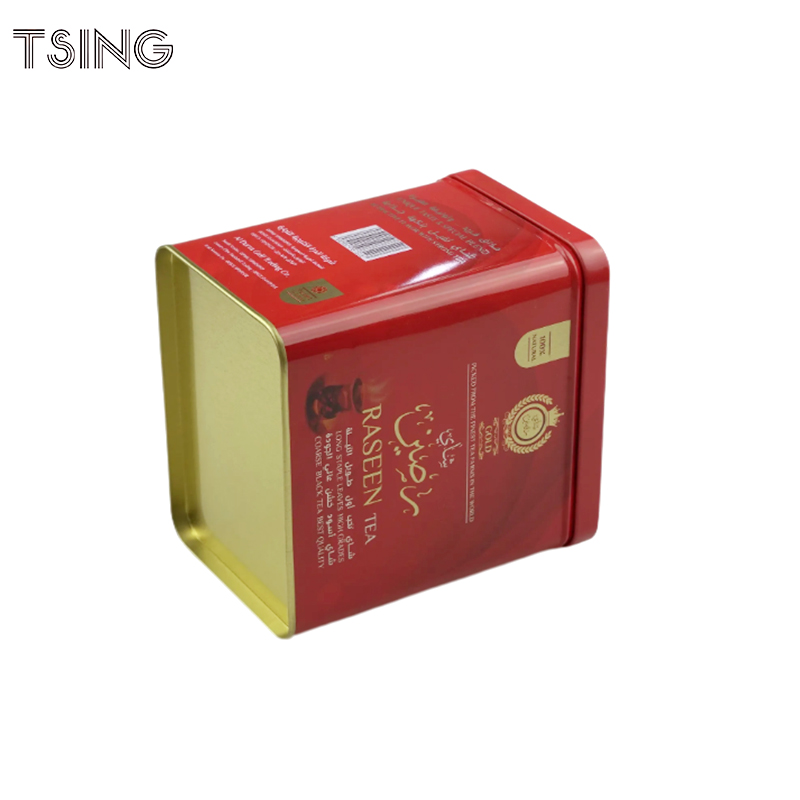Why do Middle Eastern tea producers prefer to purchase custom tea tins?
Tea culture in the Middle East is about hospitality, tradition, and sensory enjoyment, so customers in this region often choose custom tea tins to package and sell tea. As a custom tea tin manufacturer, we recognize that the Middle Eastern market requires tea tins that preserve the quality of the tea and reflect the local aesthetics and traditions. Unlike generic packaging, custom tea tins offer tailored solutions, including airtight seals, UV-resistant coatings, and moisture-proof linings, essential for protecting high-quality loose leaf tea in hot and humid climates.
Custom tea tins ensure freshness in harsh climates
The Middle East has a dry and hot climate, and high temperatures and humidity pose a significant risk to the quality of tea, accelerating oxidation and moisture absorption. Custom tea tins can resist these factors effectively using food-grade tinplate and advanced moisture-proof inner coatings. Tsing’s custom tea tins feature multiple layers of epoxy paint and precision-formed lids with built-in silicone gaskets to keep the internal relative humidity below 2%. This protection prevents tea from clumping, losing volatile aromatic substances, and developing odors. In addition, an anti-UV outer coating can be added to block up to 98% of harmful light, making it more suitable for producers of high-quality blended teas such as oolong tea or saffron, black tea.
Reflect different cultures and brand images through custom tea cans
Customized tea tins with complex geometric patterns, Arabic calligraphy, and metal foil decoration can be customized. For example, Tsing’s design team can directly integrate iconic patterns, Arabic checkered patterns, Arabic patterns, or cityscape outlines into the surface of the tea cans, and display them with screen printing, embossing, and digital UV printing technology. These visual cues strengthen the brand image and highlight the positioning of high-end tea. In high-end tea shops or gift shops, customized tea cans are particularly eye-catching on the shelves, with their reflective gold highlights and tactile finishes. For tea brands that strive to increase prices and market influence, this culturally rich customized tin can packaging can significantly increase competitive advantages.
Gift Packaging and Hospitality Traditions
Gifting is a form of hospitality and social ritual for consumers in the Middle East, making custom tea tins a treasured gift for celebrations and business events. Tsing’s custom tea tins are produced in limited quantities and feature personalised engravings, spot stamping, and custom colour schemes for special souvenirs, Ramadan gatherings, and high-end business events. The sturdy metal construction ensures these gift tins arrive safely, while the luxurious decoration makes them a treasured keepsake long after consumption. Many recipients repurpose custom tea tins as decorative storage boxes for sweets, spices, or jewellery, further enhancing the brand’s presence in various contexts. Tea producers can tap into the deep cultural traditions of generosity and respect by using custom-designed metal tin cans for gift packaging, enhancing and strengthening their tea products’ reputation.
Functional Innovations for Productivity
Beyond their aesthetics and storage, custom tea tin streamline production and logistics for tea producers in the Middle East. Quick die changes and digital colour management in Tsing’s production lines enable efficient production of high-volume of seasonal blends, limited editions, or promotional collaborations. Integrated features – such as hinged lids with magnetic closures, internal peelable safety seals, and stackable profiles – optimize filling line throughput by reducing changeover time and minimizing product spillage. Standardizing dimensions for different-sized tea tins helps optimize pallets and automated labeling systems, reducing shipping costs and streamlining warehouse operations. This operational flexibility enables tea producers to respond quickly to consumer trends while maintaining uncompromising quality control.
Sustainability and Reusability
In addition to meeting the cultural aesthetics of customers in the Middle East, custom tea tins also meet consumers’ growing demand for eco-friendly packaging solutions. Made from recyclable tinplate, with up to 90% recycled content, these tea tins support circular economy initiatives and reduce single-use plastic waste. Tsing’s custom tea tins also feature water-based inks, solvent-free lacquers, and optional compostable labels, reducing environmental impact. In addition, the durability and aesthetics of metal tins encourage consumers to reuse them for various household purposes – storing coffee or small valuables, extending their lifecycle, and reducing waste.
Boosting sales of Middle Eastern tea brands with custom tin packaging
Middle Eastern tea producers prefer custom tin cans for their unique blend of powerful preservation, culturally resonant design, and operational efficiency. These custom tin cans protect delicate tea leaves from moisture, heat, and light, providing a gorgeous aesthetic and gift-worthy packaging. From personalized gifts to retail gift sets, custom tins enhance every aspect of the tea drinking experience.






































 Facebook
Facebook Twitter
Twitter Linkedin
Linkedin